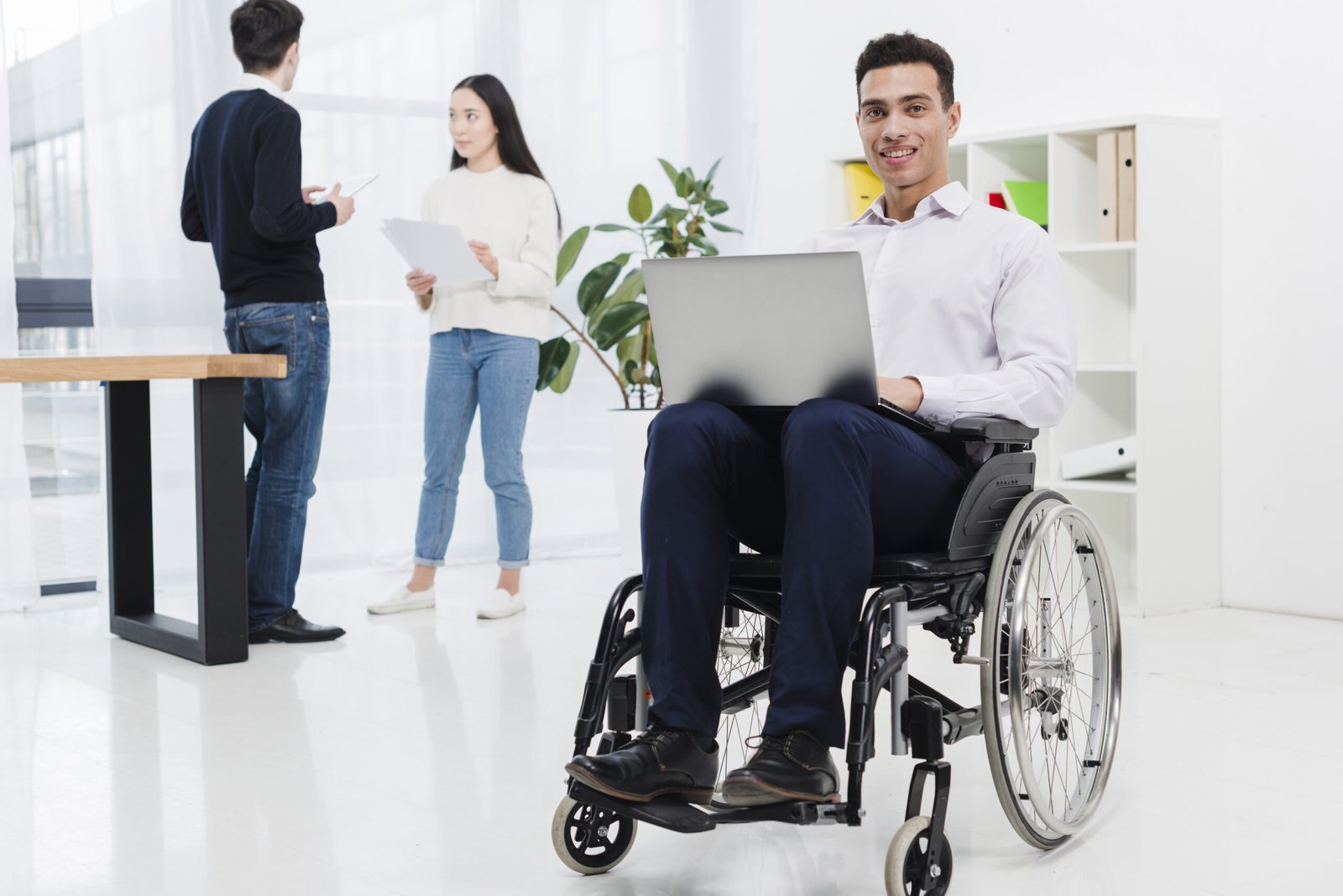
How to Interact With People With Disability?

Communicating with people with disabilities cannot be overemphasized. There is no need to act differently or be overly careful. It is about giving the same respect, courtesy, and understanding as would be extended to anyone else. Nonetheless, there are particular aspects that can facilitate and enhance the comfort of all parties concerned in the interaction. Be it in the workplace, a social situation or life in general, this is a guide on how to interact with people respectfully.
1. Communicate Directly to the Person
A very crucial thing to think about when dealing with people with special needs is that they should always be addressed directly. Regardless of whether the person has a physical disability, a speech challenge, is visually impaired or hearing impaired and is using an interpreter, it is always the individual addressed, and not the other person or an interpreter. In such a case, the person is given respect as a participant in the communication.
A person and his/her interpreter should be looked at as separate people while communicating with one another, for instance, when two people who are deaf are with an interpreter. Likewise, if one is interacting with a person who uses a wheelchair, do not gaze at the wheel chair. Speak to the person the same way as one would to another.
2. Get Attention Appropriately
When attempting to capture the notice of a deaf or hard of hearing person, a light tap on the shoulder or arm is acceptable. After obtaining their attention, speak clearly and straightforwardly. Make sure your hands are out of your face, speak in simple and short sentences and remember to not raise your voice. Maintaining a normal tone of voice is essential; one does not need to raise their voice in this instance.
3. Offer Common Courtesies
When interacting with an individual who has a disability, it is appropriate to behave in the same way as one would with any other individual. Offer to shake hands or present business cards. In case of inability to engage in a handshake, the individual will inform you and will offer an alternative. A person may be unable to accept a business card and may request that it be put away in a more convenient place.
4. Ask Before Offering Assistance
Wanting to extend help for disabled people where possible is understandable. However, it is advisable to wait until your assistance has been solicited. Some people tend to want to do things for themselves, while others have no qualms and will accept help without a second thought. Asking first in this case demonstrates respect to their need for independence and control over the situation.
5. Clarify When Necessary
When conversing with an individual who has a speech impediment and experiencing difficulty comprehending, Don’t act as if you’ve understood. Please request them to say what they have said again. Also, restate what you think is being said to avoid misunderstandings. This helps in establishing a channel of communication that is effective and courteous.
6. Respect Personal Space
When addressing persons using a wheelchair or any devices that aid them, it is pertinent to note that these items form part of their personal space. Please do not lean on or touch the wheelchair or any other assistive device as this can be uncomfortable. If necessary, speak while sitting so that you are at the same level as the audience to create a more pleasant and respectful interaction.
7. Respect Service Animals
When you meet someone with a service animal, say a guide dog, keep in mind that these animals are performing a duty. Do not attempt to touch, feed or distract the animal because it may affect their ability to perform their task of helping the owner. While some owners may allow such interactions if their service animal is off-duty, it is important to always request permission beforehand.
8. Be Patient with Instructions and Communication
In the course of normal social interactions, it may be necessary to restate or paraphrase any utterances made when addressing a person with a cognitive disability. If you are giving a set of instructions, do consider giving it in paper too, more so for cases where several actions need to be performed in order to complete one task. This guarantees effectiveness of communication and eliminates ambiguity.
9. Focus on the Person, Not the Disability
In informal chats or professional conversations, divert your attention from the person with the disability rather focus on the individual’s thoughts, inputs and other aspects. In the event that you are interviewing a candidate for a job or engaging in any work-related discussion with a disabled individual, consider the person’s qualifications and expertise. Assumptions about whether people with disabilities can do certain things or not should be avoided since most of them are able to perform numerous different jobs.
It means that in the workplace the employer must provide meaningful work for people with disabilities as they do to all the other employees in terms of respect and expectation. The discussion should not foreground disability but rather communication and interaction.
10. Relax and Be Yourself
Finally, breath! Understanding is best achieved when one respects, genuinely empathizes and talks to the person at the very least in an informal way. Most, if not all, of the emotional tension in the beginning will wear off sooner when attention is drawn to the person rather than the challenged.
Conclusion: Simple Actions Lead to Respectful Interactions
Socializing with people with special needs doesn’t have to be difficult. This can be done readily when an individual assumes direct communication, respects personal distances, offers the right kind of help, and accords the person the courtesy they would give to any other person. It is the individual who is more important and not the disability and communication becomes easy.


